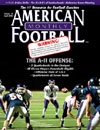AMERICAN FOOTBALL MONTHLY THE #1 RESOURCE FOR FOOTBALL COACHES
Article CategoriesAFM Magazine
|
Defensive Game PlanningGetting prepared for friday night, from scouting to kickoffby: David Purdum © More from this issue Game planning is all about prioritizing; sifting through all the infinite details that you and your staff have investigated; and pinpointing the most crucial elements. Every coach worth his whistle charts tendencies from every down-and-distance, from every formation, and from each hash mark. They scout blocking schemes and multiple personnel match-ups, just like you do. They document the number of times you run certain routes; they know what your go-to running and passing plays are and how often your run them. St. Xavier (OH) head coach Steve Specht’s defensive game plans aren’t much different. They contain all of the above. But what’s helped Specht lead the Bombers to two state championships in the last three years is his staff’s ability to simplify the game plans. In four seasons, Specht’s record is 51-3 a....The full article can only be seen by subscribers. Subscribe today!
|
|
|||||||
| HOME |
MAGAZINE |
SUBSCRIBE | ONLINE COLUMNISTS | COACHING VIDEOS |
Copyright 2025, AmericanFootballMonthly.com
All Rights Reserved





